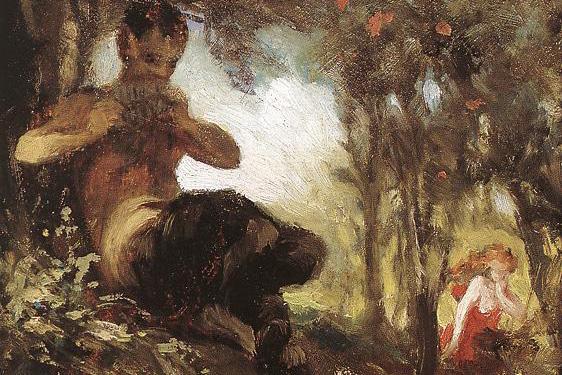
Claude Debussy was tired of writing the same type of music in the 1890s. The grand Romantics -- Camille Saint-Saens, Antonin Dvorak, Giacomo Puccini and Guiseppe Verdi -- were still the style.
Debussy broke the musical mold, so to speak, with his "Prelude to the Afternoon of a Faun," considered the beginning of modern music. It was also described as impressionistic because it coincided with the new painting styles of artists like Claude Monet.
Debussy’s rhythms in "Prelude" are surprising. They can challenge your sense of balance since he, at times, has two rhythms going on simultaneously. His harmonies push the limits as Wagner's did years earlier, but they don’t sound shocking; they seem completely natural. The structure of "Prelude" defies classification -- it seems improvised to us, but in fact, it’s highly structured.
Debussy didn't like the term impressionism to describe his music. He said, “There is no theory. You merely have to listen. Pleasure is the law.”
Ground-breaking art often creates a stir at first, but Debussy’s "Prelude" was loved right away by musicians and audiences. Those at the Paris premiere in 1894 insisted on hearing it a second time!
This story is part of a Monet Mondays series CPR Classical is airing every Monday through January 2020. The stories and music about Impressionism air on CPR Classical (88.1 FM in Denver) at 6 a.m., 8 a.m., 10 a.m.. 1 p.m., 3 p.m., 6 p.m. and 8 p.m.. Listen to CPR Classical on your radio at 88.1 FM in Denver, stream the music on this website, or by asking your smart speaker to "Play CPR Classical." (Find other ways to listen.)

For a limited time, if you become a member of Colorado Public Radio, you'll receive "Music in Monet's Time," a custom CD of greatest Impressionist works created by CPR Classical in partnership with the Denver Art Museum.









